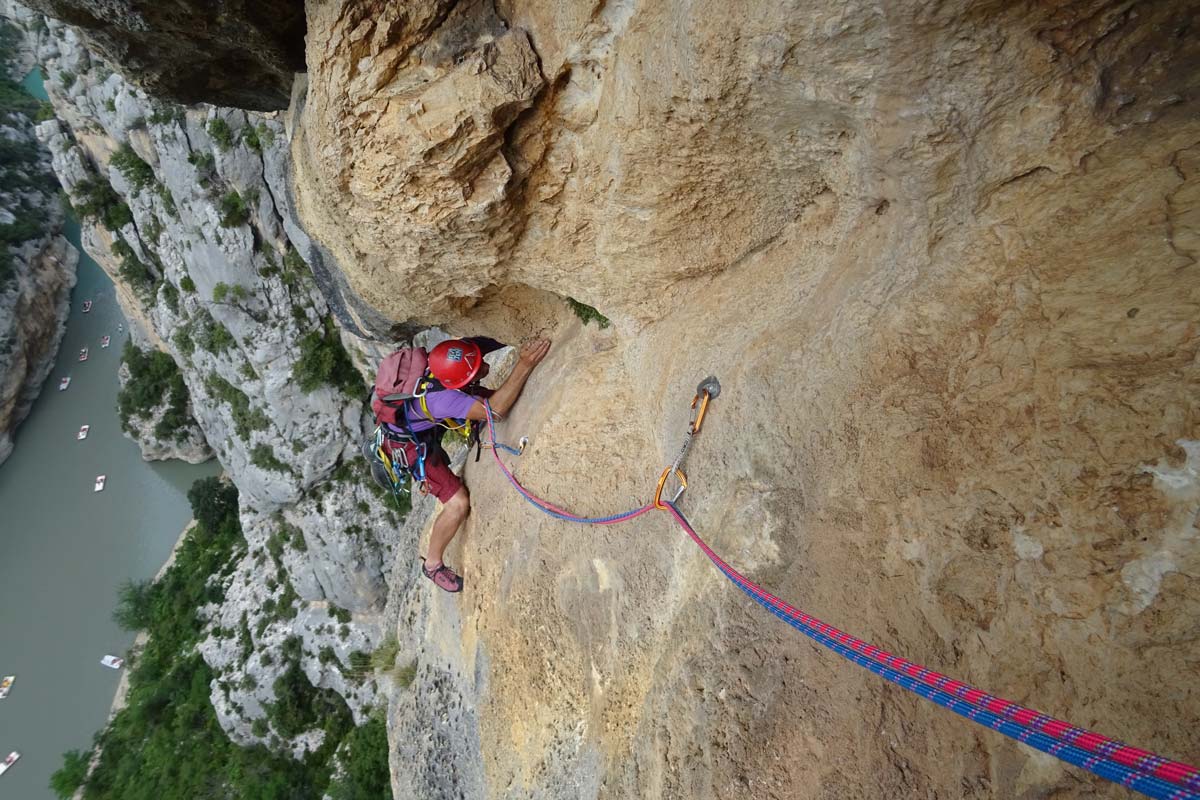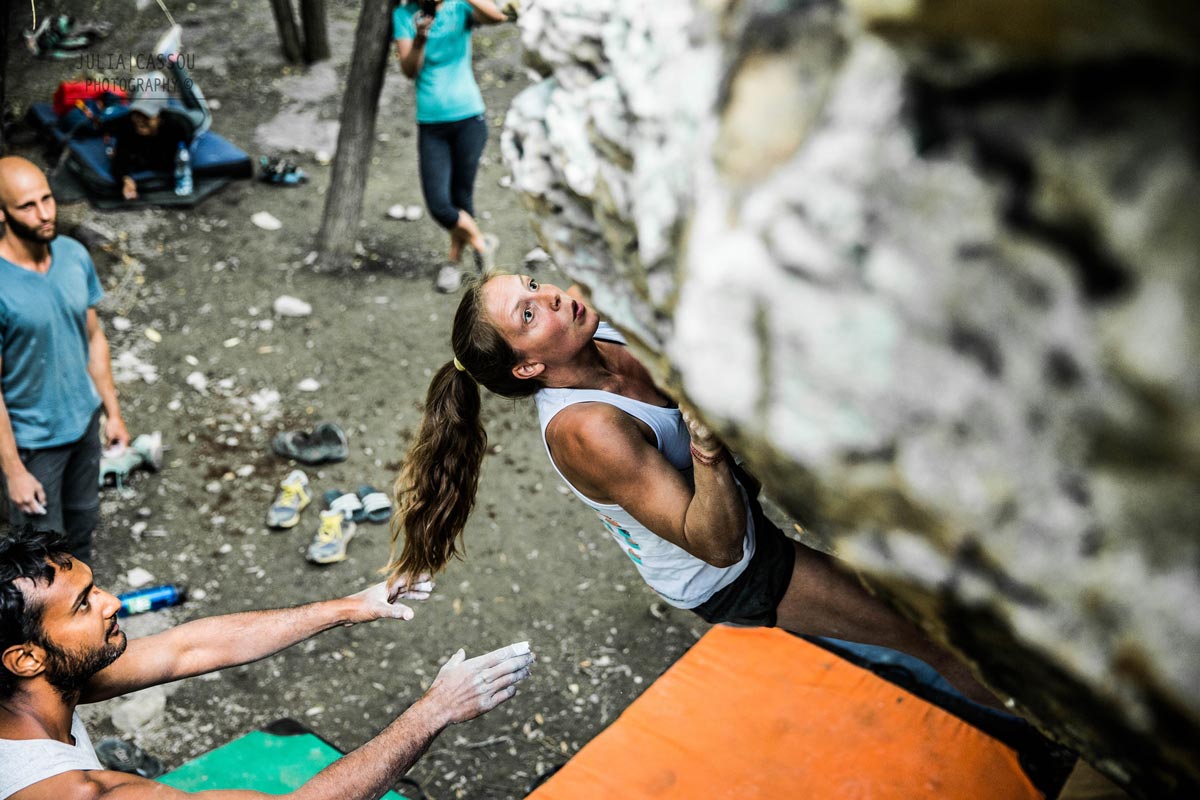Editor’s Note: This extreme caution is an update of a notice first published in 2009 titled Extreme Caution advised for anchors in tropical, marine areas
The French version of this article can be found here.
The Chinese version of this article can be found here.
Background
The issue of environmental degradation of anchors caused both by general corrosion as well as chloride stress corrosion cracking (SCC) is ongoing and was first reported in the UIAA newsletter of 19 October 2009.
The initial study found that up to 20 percent of anchors in more extreme locations such as a tropical and marine environments are at risk. However cases of anchor degradation have been reported in other locations and although not as frequent, any fixed anchor may be subject to corrosive degradation.
There has always been some risk of anchor failure due to improper installation, corrosion, or stress corrosion cracking (SCC). What is new is that we have a better understanding of the underlying science and mechanisms behind some of these failures. It has been found that in cases where certain ranges of humidity exist, salt deposits on some types of stainless steel can cause chloride stress corrosion cracking much faster than expected, in some cases within a year of exposure.The affected anchors do not always show any visible signs before their often sudden and potentially disastrous, failure. These factors were not always appreciated before.
In addition to this, there are the usual corrosion issues due to improper installation (such as using two dissimilar metals next to each, causing galvanic corrosion) that result in crevice corrosion and general/bulk corrosion.
Improved standards
Improved standards for anchors must therefore take into account the possibility of stress corrosion cracking on top of rock type, anchor placement and other factors.
The UIAA Safety Commission has a Working Group looking at ways to address these issues but it is not an easy problem to solve. It is difficult to determine which locations are at risk due to chloride stress corrosion cracking. Many factors affect this, such as distance from the sea (or other source of salt), rainfall, humidity, temperature, wind conditions etc. It should be noted that corrosion issues can be just as serious as stress corrosion cracking. Both factors must be considered when selecting a suitable anchor. It could be argued that the issue of corrosion, particularly crevice corrosion, is more prevalent than stress corrosion cracking and should be considered a higher priority. However the aim of the UIAA Safety Commission is to work towards an overall solution to the entire issue of environmental degradation (i.e. corrosion as well as stress corrosion cracking).
Findings
At the recent Safety Commission Meeting in St. Petersburg, Russia, the Anchor Standard Revision Working Group presented its current findings and is recommending specifically that:
- Anchors be classified in terms of their resistance to corrosion and to stress corrosion cracking
- Standard tests and requirements are identified to rate anchors according to these classes
We believe that the following classes would be appropriate:
- Class 1: High resistance to both general corrosion as well as to chloride SCC
- Class 2: High resistance to general corrosion and moderate resistance to SCC
- Class 3: High to moderate resistance to general corrosion and no specified/required SCC resistance
- Class 4: no specified/required resistance to corrosion or to SCC
A more thorough explanation of these classes and the rationale behind them will be forthcoming along with proposed tests and specifications in order for anchors to qualify for each class.
One major complication is that unlike the construction industry climbing anchors are not generally installed for any specified lifetime. And likewise, there is generally no controlled system of inspection and replacement through their lifetime. Both of these things make it more difficult to make recommendations about the best anchor to use in a given locationAnother complication is that climbing anchor selection tends to be very cost sensitive, sometimes with selection based on short term goals and not based on the potential lifetime of the anchor.
What is needed
Our aim is to provide a classification system that will allow climbers to select the appropriate anchor for their application. However they will need to make an informed decision, since it would be almost impossible for a manufacturer to make blanket statements about anchor selection since conditions can vary from place to place. Therefore, as a supplement to the revision of the UIAA Anchor 123 Standard, we will also be making recommendations about how to perform anchor selection for a given location coupled with the anchor classifications, to reduce the risk of premature anchor failure.
The last point is an important one: all equipment eventually wears and anchors are no exception. Current standards for most climbing equipment include labelling that reflects the manufacturer’s recommendations concerning equipment lifetime, inspection & maintenance protocol, and retirement criteria. Anchor specific recommendations will be part of the Safety Commission’s output.
Recommendations
The UIAA Safety Commission’s warning from October 2009 is still in effect. In the absence of standards for the corrosion resistance of anchors and recommendations for their installation, inspection, and retirement, climbers may manage the risk of corrosion degradation by:
- Before climbing, talk to local climbers and the people who equipped the routes to determine the quality of the anchors in place
- Find out if a climbing area is regularly re-equipped. Experience to date shows that if anchors are less than three years old, they are less likely to be weakened by corrosion
- Look for traces of rust on anchors. If you see such marks, do not load the anchor, and stop the climb, as it is just these sorts of anchors that have been dangerous in the study. Alert locals so they can deal with the situation. If appropriate, you can also replace the weakened anchor if you have the expertise and competence to do so
- Opting to not climb on routes in tropical, marine environments that show rust, or for which you don’t know who maintains the routes or when the equipment was put in place
This warning and any subsequent UIAA standards or recommendations are based on the fundamental assumption that the climber must evaluate the quality of anchors in place and accept the risk of anchor failure due corrosion.
Principal author: Alan Jarvis, Mountain Club of South Africa
Safety Commission Working Group: Alan Jarvis, Jean Franck Charlet, Dave Custer, Bernard Bressoux, Dimitris Karalis, Lionel Kiener and Jason Kammerer


